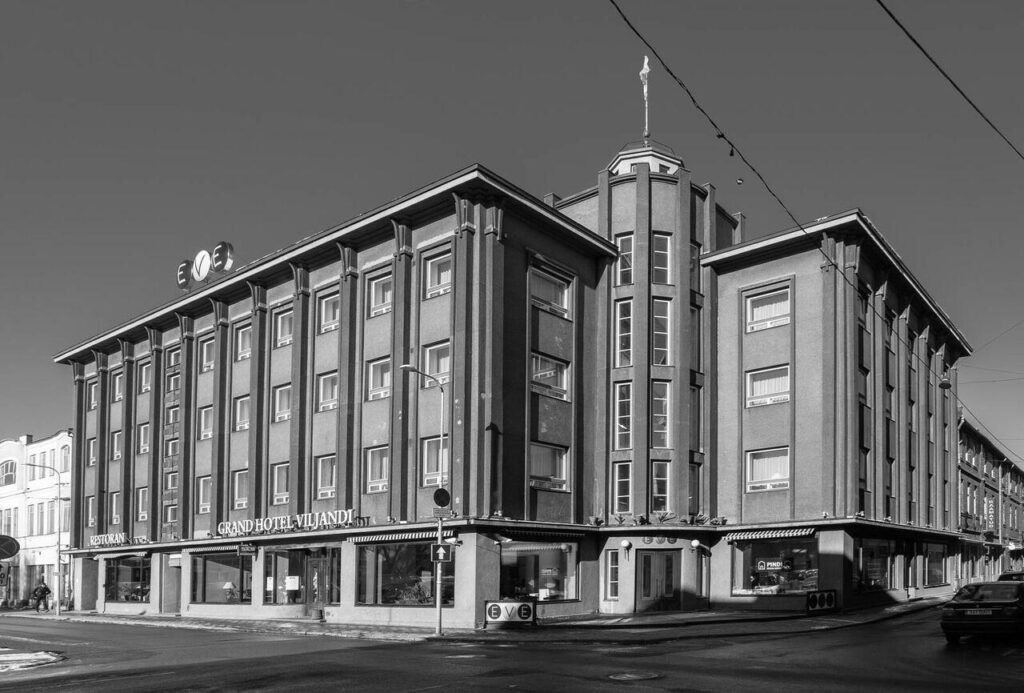It stands out as a design movement due to its brazen modern simplicity and selective splashes of grandeur. Something is enticing about the agility of Art Deco; how it embraces what beauty can be found in symbols of human invention. Art Deco's visual gusto can be found in train stations, movie theatres, skyscrapers, furniture, and even coffee cups. Elements we can identify include geometric shapes, shiny chrome, brass, and wood details.
Art Deco, having existed for a relatively short period of time, certainly isn't the most common design or architectural style found in Estonia. More prevalent styles include baroque (for example, Kadriorg Palace), neoclassical (such as the University of Tartu's main building), or Art Nouveau (like the Estonia Theatre in Tallinn).
However, one building that does embrace the clarified, sleek Art Deco architectural style is the Grand Hotel Viljandi. Since the building was completed in 1938, it has contained a hotel, a bank, a restaurant, a clothing store, and a pharmacy; all at once at one point.

Become a subscriber to continue reading!
Every week we bring you news from the community and exclusive columns. We're relying on your support to keep going and invite you to subscribe.
Starting from $2.30 per week.




